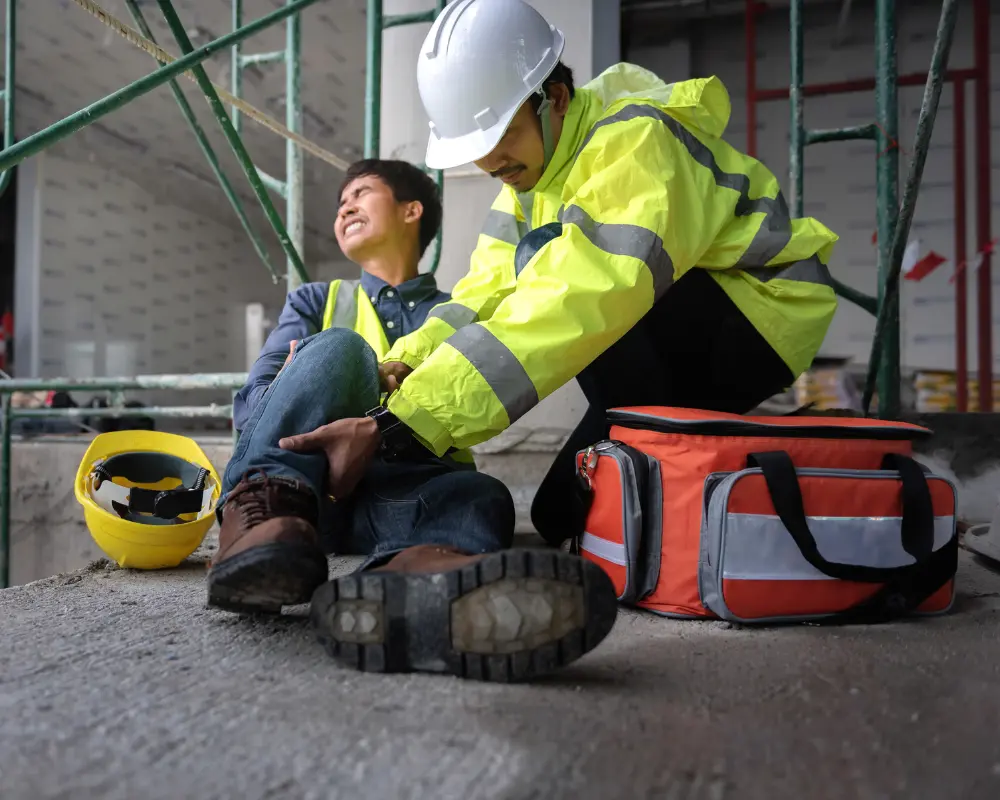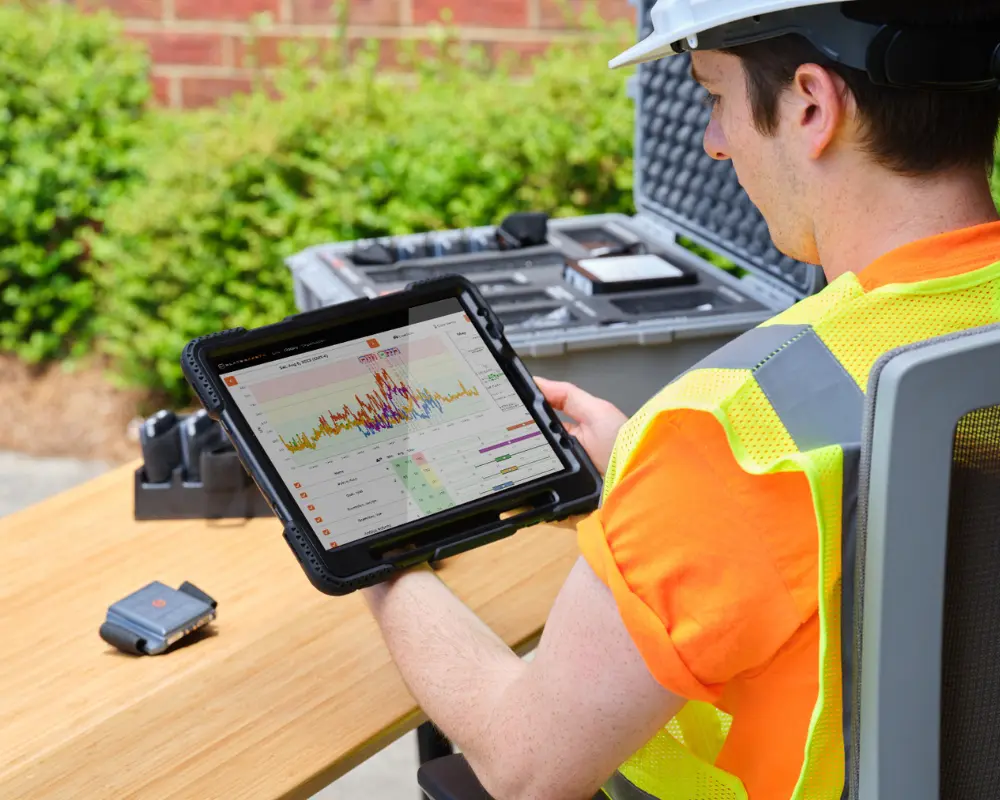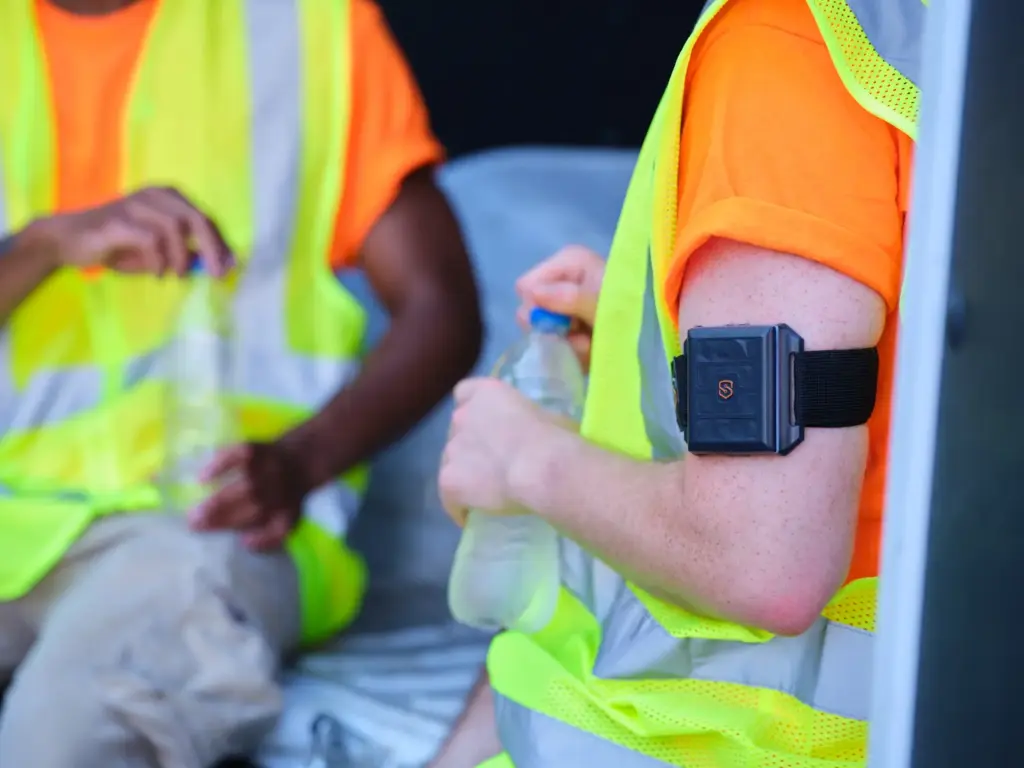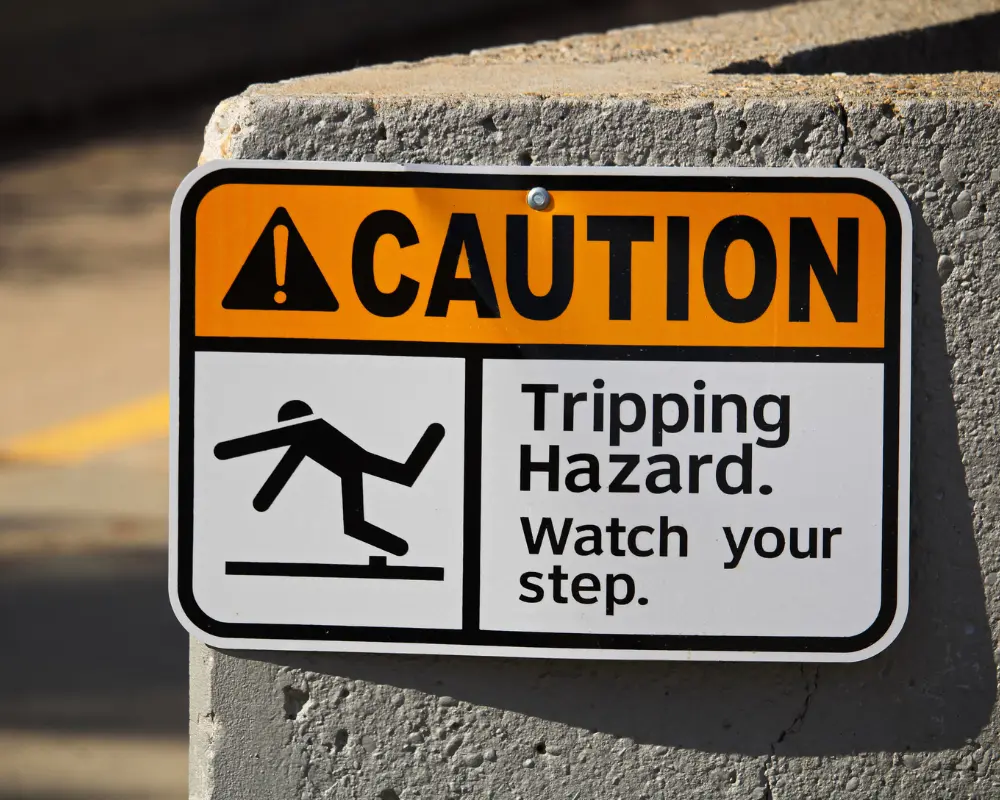Workplace safety professionals know that trip and fall accidents can lead to serious injuries, lost productivity, and even fatalities. Despite precautions, these accidents remain common, particularly in physically demanding environments like construction, manufacturing, and emergency services. The issue becomes even more challenging when workers are alone or in hard-to-reach areas. A delayed response to a fall can turn a preventable incident into a severe injury.
That’s where fall detection technology comes in. With advancements like those in SlateSafety’s BAND V2, we now have tools to detect falls immediately and alert supervisors, ensuring quick intervention. In this article, we’ll explore trip and fall hazards, why fall detection is critical for workplace safety, and how SlateSafety’s innovative products can help reduce risks and save lives.

The Need for Fall Detection Technology
Trips and falls are more than just a common hazard—they’re a leading cause of serious injury. According to the National Safety Council (NSC), falls make up almost a third of all non-fatal injuries in the United States, with over 800,000 fall-related hospitalizations every year. In the construction industry alone, falls account for roughly 33% of all fatalities, making it the number one cause of death.
The impact of falls goes well beyond the immediate injuries. According to the NSC, U.S. employers spent $167 billion on workplace injuries in 2022, covering medical expenses, workers’ compensation claims, and legal fees. Additionally, every fall disrupts productivity; injured workers need time to recover, which slows down projects and reduces team efficiency.
Supervisors can’t be everywhere at once, especially in large-scale operations or high-risk settings. Manual oversight is not enough to guarantee the timely detection of accidents. To address these challenges and provide workers with real-time protection, fall detection technology offers a way to monitor incidents more effectively and ensure swift responses.
How Fall Detection Technology Works
Fall detection technology bridges the gap between an accident occurring and a supervisor being notified. These systems use sensors to detect the physical signs of a fall—such as sudden downward movement and a hard impact—and send an alert to a supervisor, ensuring rapid response.
Key Components of Fall Detection Systems:
- Sensors (Accelerometers): These devices detect rapid changes in motion, such as free falls, and measure the impact that follows. This technology distinguishes between regular movement (like bending or sitting) and actual falls.
- Impact Thresholds: Fall detection systems have pre-set thresholds that differentiate between normal activities and dangerous events. If the accelerometer detects motion exceeding these limits, it triggers an alert.
- Alerts and Notifications: Once a fall is detected, the system sends real-time alerts to supervisors, either through mobile devices, dashboards, or connected safety systems. This immediate notification enables quick intervention, minimizing harm.
With an understanding of how fall detection systems operate, let’s take a closer look at the key benefits this technology brings to the workplace.
Benefits of Fall Detection Technology

The advantages of fall detection technology go beyond immediate alerts. They offer a proactive approach to workplace safety, keeping workers safer and operations running smoothly.
Immediate Detection and Alerts
The most significant advantage of fall detection technology is its ability to send instant alerts when an accident occurs. These real-time notifications reduce the time it takes for supervisors to respond, potentially saving lives and preventing more serious injuries.
Improved Worker Safety
With fall detection systems in place, workers feel more secure knowing they are monitored in real-time. This technology adds a layer of protection, particularly for those working in isolated areas or under hazardous conditions.
Proactive Safety Management
Data gathered from fall detection systems allows supervisors to adjust safety protocols and work environments based on actual incident data. Over time, this proactive approach reduces the likelihood of future accidents.
Data-Driven Safety Insights
Fall detection systems can also provide insights into workplace safety trends. By analyzing fall data, companies can identify high-risk areas or practices requiring additional attention, training, or safety measures.
Recognizing the value of fall detection technology, let’s now explore how SlateSafety’s BAND V2 enhances this capability, offering a comprehensive solution for modern workplaces.
SlateSafety’s Fall Detection Feature on the BAND V2
At SlateSafety, we’re committed to innovation and safety. This month, we’re releasing a new fall detection feature for our flagship wearable device, the BAND V2. This feature enhances our already robust physiological monitoring system, making it an essential tool for industries where falls are a constant threat.

How It Works:
- Accelerometer Technology: The BAND V2 is equipped with an accelerometer that detects sudden free falls and high-impact events. If the system registers a fall, it activates a safety response.
- Alert System: When a fall is detected, the BAND V2 vibrates four times and displays a spinning red LED light. This visual and physical alert lets the worker know the system has triggered. Simultaneously, an alert is sent to their supervisor, allowing for an immediate response.
- Fall Detection Settings: Each workplace has unique safety requirements. The BAND V2 provides the option to enable or disable the fall detection feature, allowing organizations to decide whether they want to track falls based on their specific environment. This flexibility ensures the system works seamlessly with their overall safety protocols.
Trip and fall hazards are a serious concern in many industries, posing risks to both workers and organizations. SlateSafety’s BAND V2, now equipped with fall detection capabilities, offers a comprehensive solution. By combining real-time alerts with robust physiological monitoring, the BAND V2 ensures that workers are protected from a wide range of safety threats, including heat stress, overexertion, and now, falls.
Ready to enhance your workplace safety? Learn more about SlateSafety’s BAND V2 and how it can help protect your team from fall hazards and more. Visit our website to explore our solutions and request a demo today.

